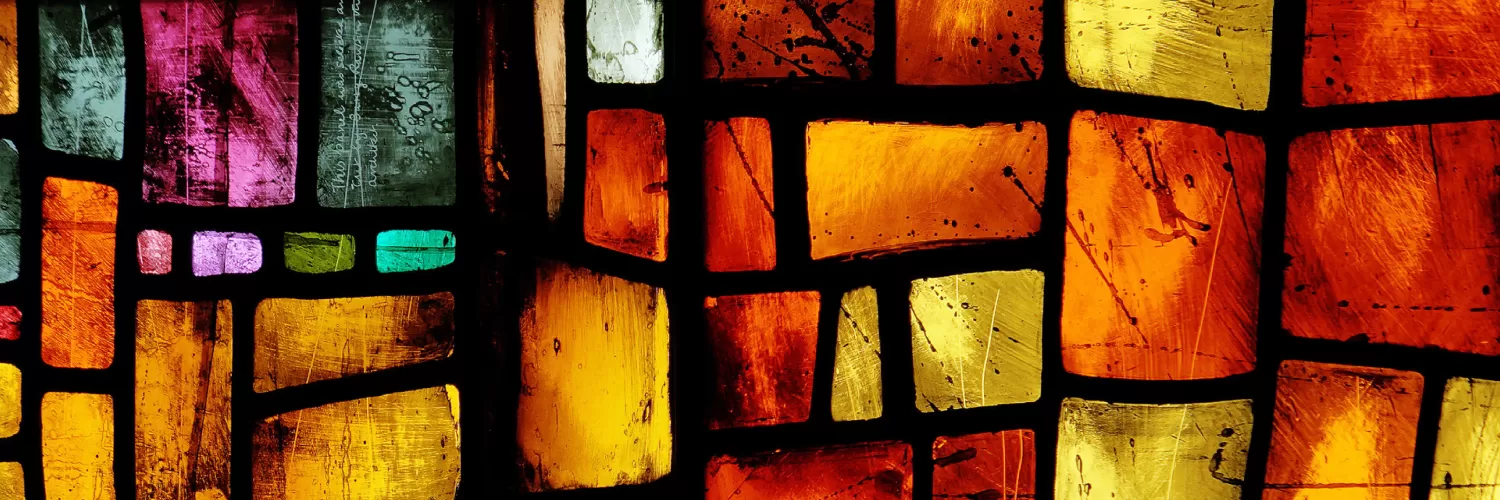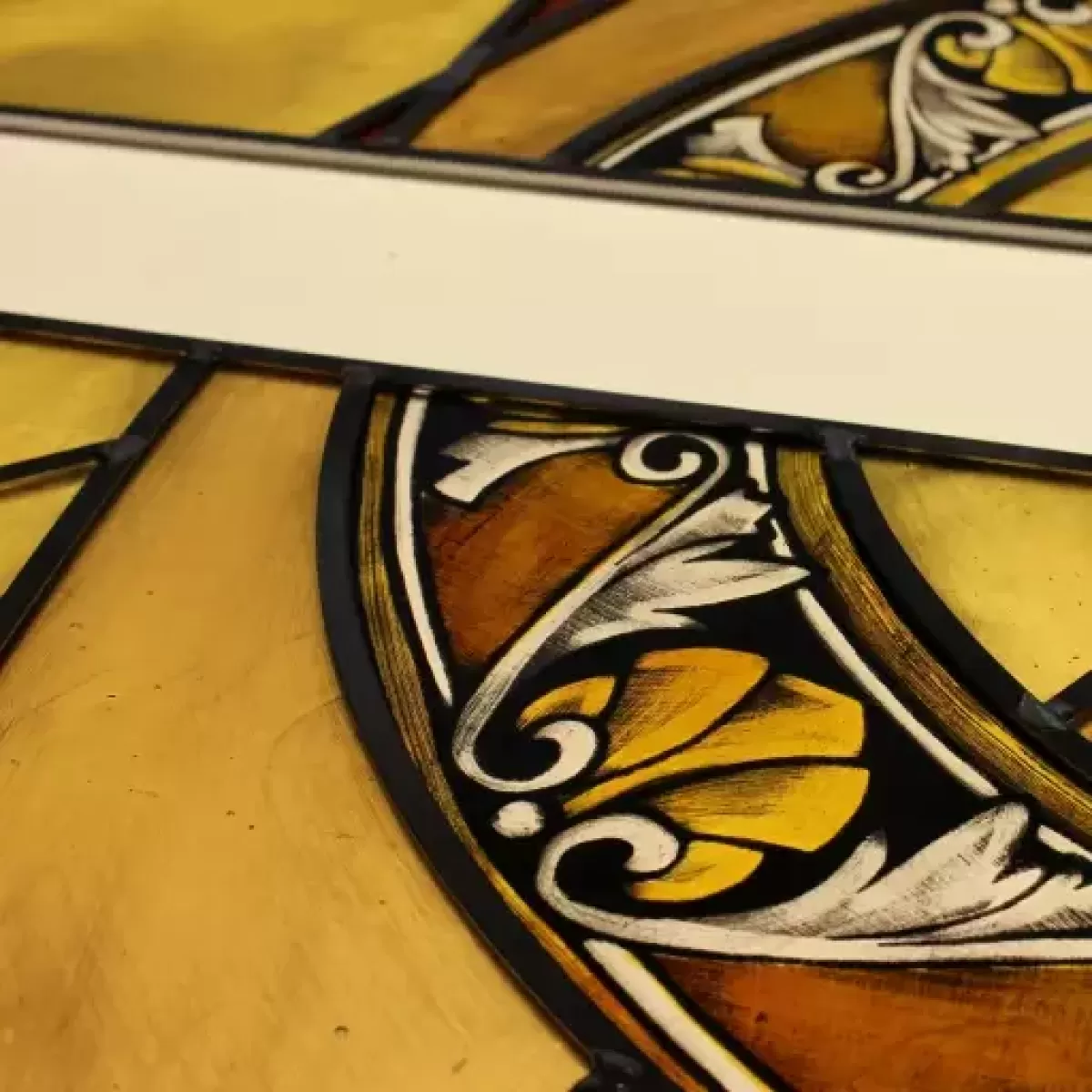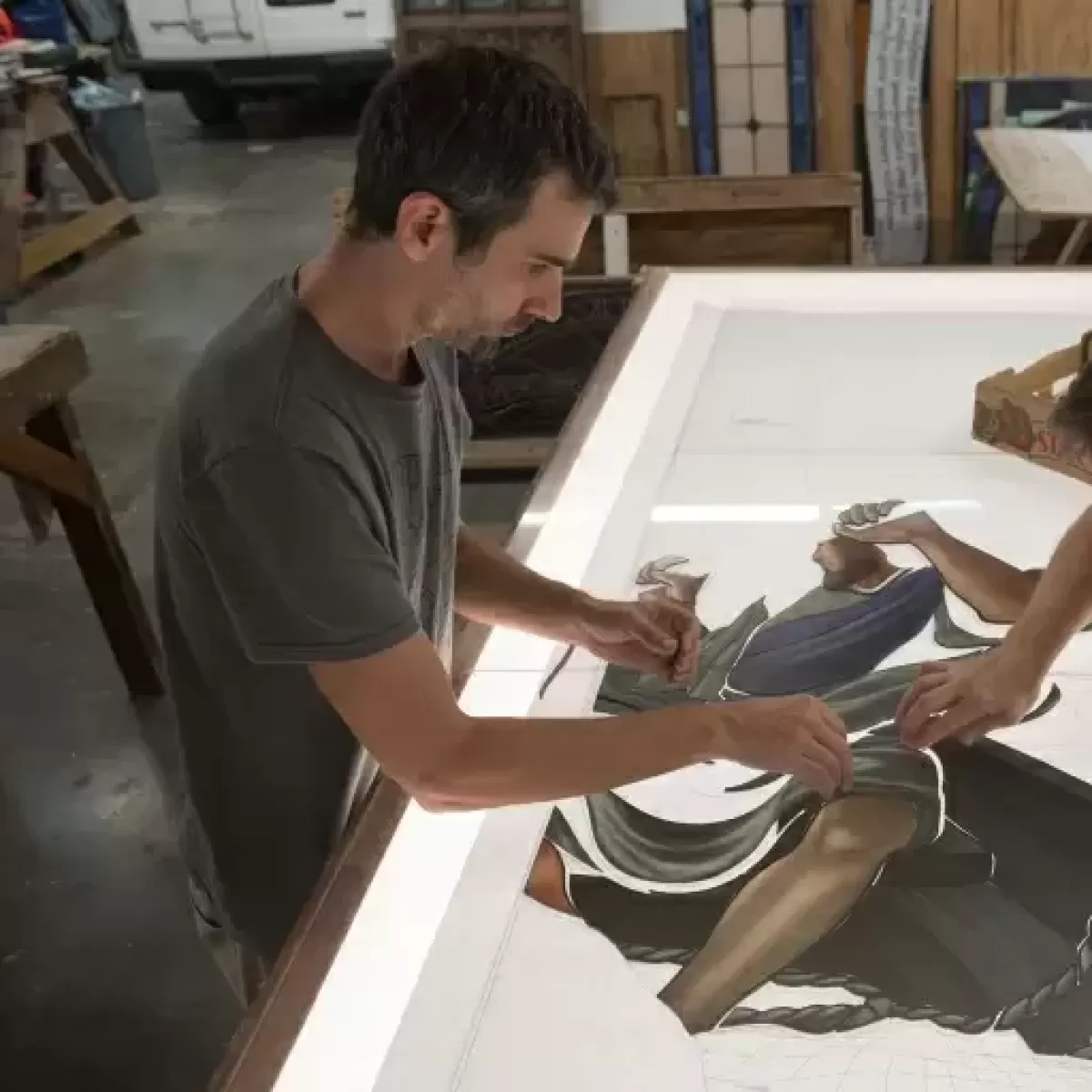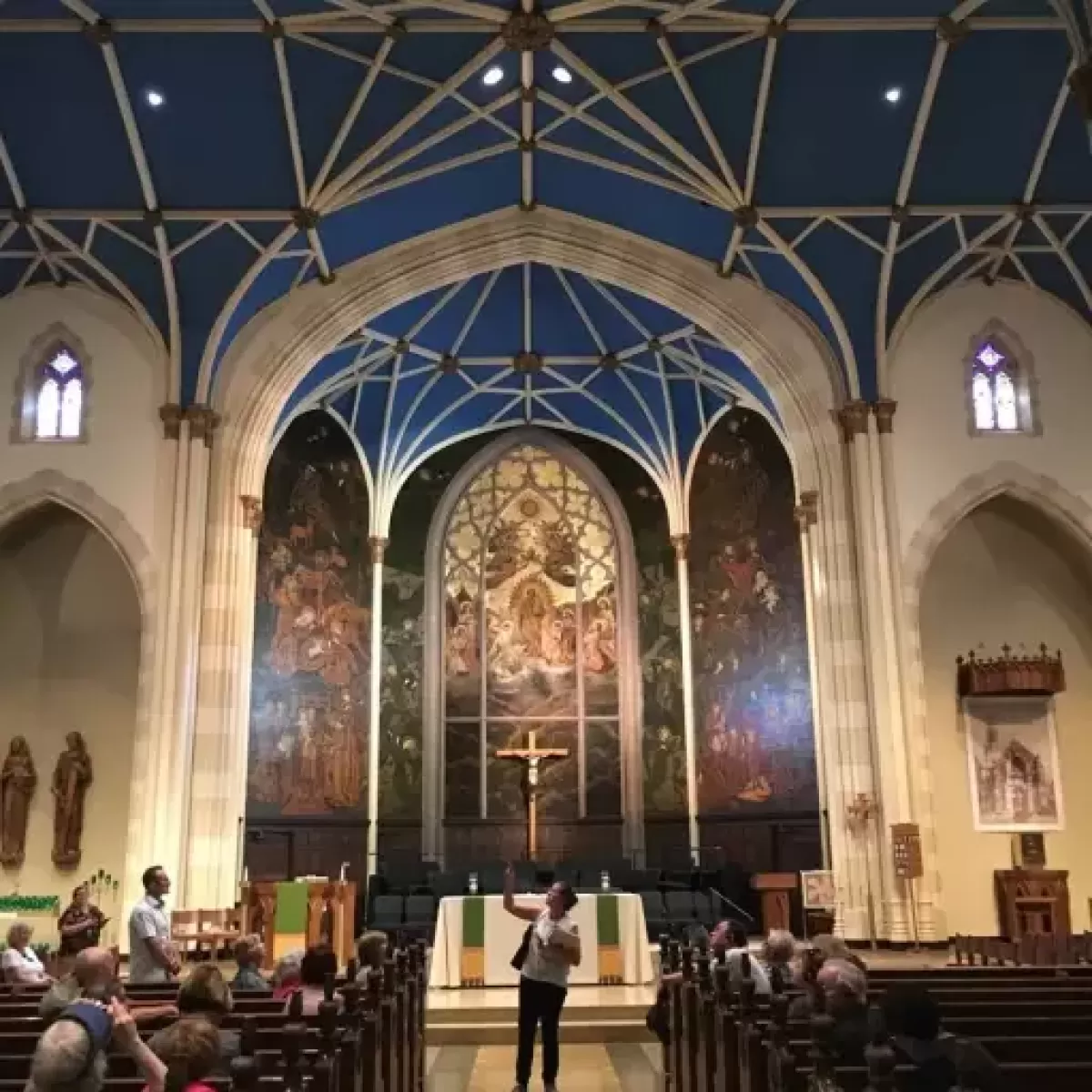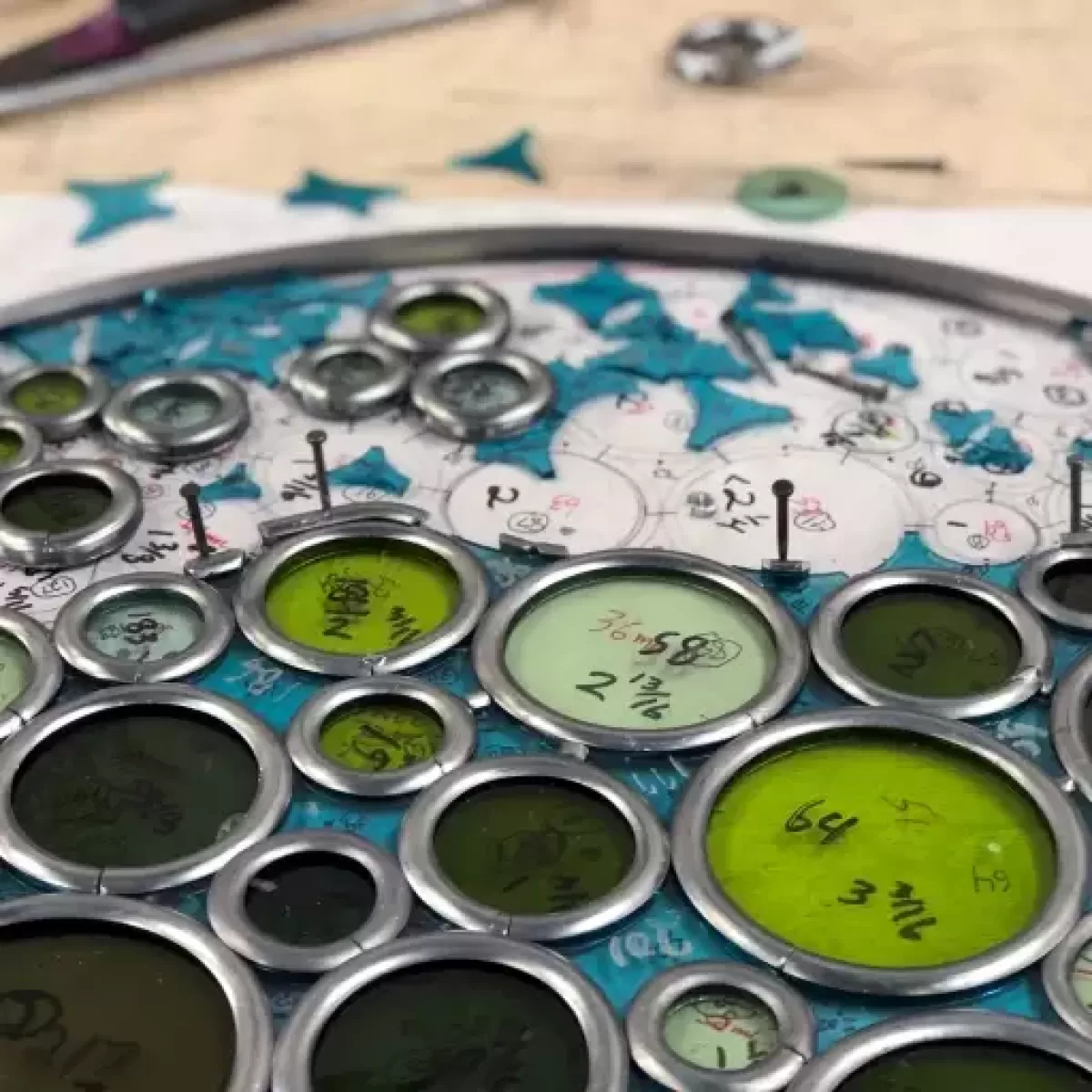Once the decision to include stained glass in a building project is made, there are several important factors which should be considered in selecting the studio with which to work. The selection process involves many factors, not the least of which is the reason or reasons stained glass is being incorporated into the building, including:
- a request from the client to incorporate art into the building
- a need to control light
- the need to block an unattractive view while still admitting natural light
- the need to create an environment or mood
Different stained glass studios excel in different aspects of the craft. A studio which specializes in contemporary design may be ill equipped to create medieval-style windows. The initial interviews, in which the architect or client meets with representatives of several different studios, is the time to determine which studios are best suited to create glass for the particular project. The initial interview should include as much detail as possible about the project, including subject, specifications, style and budget. This is also the time to discuss how many different designs will be submitted for consideration in a particular project and what the fee for those designs will be.
Following the initial interview, the client should be able to develop a short list of possible studio candidates. Once this list is developed, the process of selection continues with investigating the studio's background and past work. The client should request slides of work completed by the different studios as well as the design sketches from those projects. This allows the client to see the nature of that particular studio's work and to determine how well the designs translate into finished work.
Client Checklist for Accredited Professional Studios
There are many, many factors to consider when hiring a stained glass studio whether the task at hand is restoration or new work. While creating and managing an RFQ or an RFP, this list may prove useful in helping ensure that the work proposal of the studios you are comparing is truly equal.
Download a PDF list Client Checklist for Accredited Professional Studios here (opens new window).
One of the most crucial things a customer or committee can do when selecting a studio is to follow up with both recent and long-past job references. Especially when deliberating on restoration work, do not hesitate to ask for references from at least 10, 15, or even 20 years ago.
The above checklist of other questions and qualifications can be utilized to make sure that the bids submitted for your project have a comparable value. The list includes questions involving insurance, safety, and experience in addition to questions specific to restoration vs. new work.
Other Considerations in Selecting a Studio
The Stained Glass Association of America stresses the importance of checking a studio's references and questioning such factors as the studio's ability to complete work within the given time frame and to work with architects and construction companies involved in the creation of the entire project. The SGAA also recommends checking jobs which are several years old to make sure the designs have stood up to time, environmental codes and standards. It is also important to check the studio's finances to insure that the business is stable and able to support the project.
If at all possible, the client should visit the studios under consideration for the project. Insight into the company's work procedures, abilities and particular approach would be best determined by observing the craftspersons and their working environment.
Having conducted interviews and researched the studios considered, the client is then in a position to select the studio to perform the commission. A contract should then be drawn up which includes a description of the subject to be addressed; specifications for the finished windows; the process of design acceptance; overall budget and payment schedule; deadlines for the submission (and selection) of designs, cartoons and the finished stained glass; and the responsibility of final installation.
With the field narrowed to one studio and a contract between the studio and client agreed upon, the process of design begins. While the design process will be unique to each commission, it will generally be a process of ongoing dialogue between the studio and the client to insure that the client's needs and expectations are met. This is also the time to finalize the selection of the glass palette to be incorporated into the final project.
Hiring a Consultant
WHAT DOES A CERTIFIED STAINED GLASS PRESERVATION CONSULTANT PROVIDE?
- Identify historically and/or artistically significant stained glass vs. temporary glass or that of lesser value
- Educate the client on the choices of conservation, restoration (releading) or Stop-gap repairs
- Consulting Report
- Bid Spec (Tools, materials, processes)
- RFP and RFQ
Most Accredited Professional Stained Glass Studios offer both consulting and restoratio services. While the experience of Accredited studios makes them an ideal candidate to consult with a community on their stained glass needs, all too often, a congregation relies on one studio for everything from the Conditions Assessment Report to the restoration work.
If a studio undertakes a conditions survey, it may be advisable to pay for these services, eliminating any sense of obligation for future work. Make it clear whether their role will be as a consultant or as a contractor bidding on restoration work. While on smaller jobs this is often unnecessary and financially unviable, for larger jobs, a properly hired consultant can save time and financial resources overall as they can help create a work schedule based on imminent needs, and stay on to supervise the work to ensure that work conforms to contract specifications and recommend solutions as a neutral third party should any problems arise.
A note about consultants: NOT ALL CONSULTANTS ARE THE SAME
The technical decisions of the most well-intentioned academic preservation consultant often miss a number of solutions offered by a truly experienced stained glass restoration studio. This is one field wherein in many cases, there is still no substitute for experience.
After Selection: Fabrication
Once a design is selected, the process of cartooning and fabrication can begin. Cartooning consists of full-size drawings of the stained glass project which illustrate the placement of glass and the material which will be used to secure the glass in place, such as lead, copper foil or epoxy. The cartoon will serve as the pattern as the piece is fabricated.
Fabrication involves the actual building of the stained glass, using techniques appropriate to the project. While the finished piece may be quite large, stained glass is generally built in smaller panels rarely larger than three feet on the longest side. This allows the installed piece to better withstand the stresses it will endure when in place in the building.
Installation should generally either be performed by the studio which creates the stained glass or be subcontracted by that studio. Stained glass which will have an exterior facing requires an airtight seal in the frame. If secondary or protective glazing is to be incorporated, there should be between 3/4" and 1 1/2" clearance between the stained glass and the secondary glazing; vents should always be incorporated into the design to prevent condensation and allow air circulation between the stained glass and its secondary glazing.

